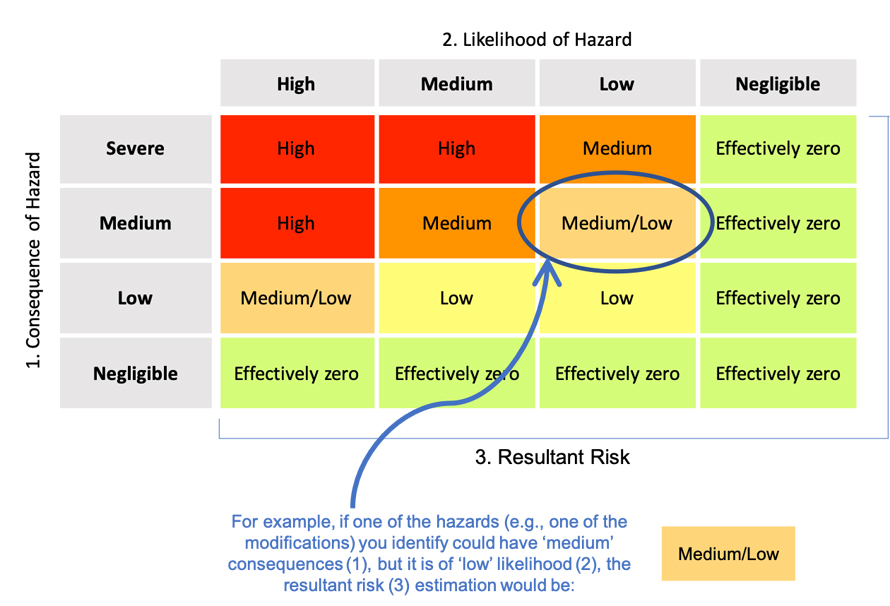GM Risk Assessment Proformas
GM Risk Assessment Proformas
The following forms are recommended for use by all departments.
For low risk work in the University, all risk assessments must be made by completion of the appropriate form. For higher risk work the level of detail required is such that the layout of the form may make it difficult to complete. In such cases a form need not be completed but the risk assessment must contain all the appropriate information to the same systematic format.
Given the different containment and control measures in the GM regulations, the University provides 6 different templates depending on what GM activity is being risk assessed. The Risk Assessment process is very similar in each of the following templates, but the guidance and prompts given on the forms relate to the type of work you are doing. Use the form that best suits your project/activity, and remember you can use one form to cover all of the different stages of your particular project.
It is recommended that the forms will be read and completed electronically.
GM(SHORTFORM) – for the genetic modification of non-pathogenic E. coli and derivatives, and other low risk microorganisms, including animal and plant cells in culture
Form GM(A) – for the majority of GM work, this form covers the use of genetically modified microorganisms and eukaryotic cell culture systems (human/plant/animal), with additional sections relating to viruses and viral vectors
Form GM(B)– for the generation breeding or use of genetically modified animals
Form GM(C) – for the generation breeding or use of genetically modified plants
Form GM(D) – for genetically modified plant pathogens and plant-associated microorganisms
Form GM(E) – for the long term storage of GM cultures, stocks, etc.
These are standardised forms and have been "commended" by the HSE. Their use is recommended. Feedback on these forms and suggestions for improvement are welcome, and can be sent to the Safety Office.
Risk Assessment
The regulations and the GM forms require you to determine the hazards and levels of resultant risk in a project. The table below is designed to assist with this process, and help determine whether each identified hazard will have a High, Medium, Low or Effectively Zero level of resultant risk.

